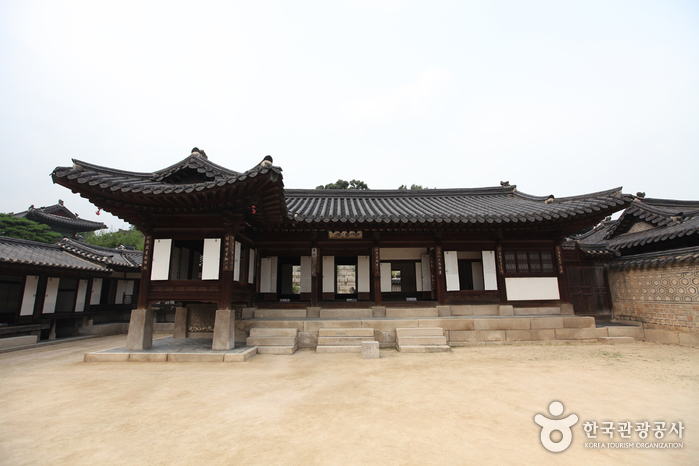Nakseonjae Hall (낙선재)
2.6Km 2021-09-30
99, Yulgok-ro, Jongno-gu, Seoul
+82-2-2148-1822
Located inside Changdeokgung Palace, Nakseonjae Hall is a one-story structure built in ikgong style (bird wing-shaped eaves placed on top of the pillars) with a hip tiled and gable roof. It has 6 kan in the front and 2 kan (traditional unit of measurement of the space between pillars) to the sides. It originally belonged to the nearby Changgyeonggung Palace, but came to be considered a part of Changdeokgung Palace in more recent years.
The hall was constructed in 1846 (12th year of King Heonjong’s reign) and it is collectively called Nakseonjae together with the adjacent Seokbokheon Hall and Sugangjae Hall.
Behind the building is a flower garden made of stacked large stones. The chimney, the flowers, and the oddly shaped stones harmoniously blend into one another to create an outstanding landscape gardening.
Sporado Adidas - Lotte Mia Branch [Tax Refund Shop] (스포라도 아디다스 롯데미아)
2.7Km 2024-04-23
5F, 62, Dobong-ro, Gangbuk-gu, Seoul
-
Uniqlo - Lotte Mia Branch [Tax Refund Shop] (유니클로 롯데미아)
2.7Km 2024-04-18
7F, 62, Dobong-ro, Gangbuk-gu, Seoul
-
Galaxy - Lotte Mia Branch [Tax Refund Shop] (갤럭시 롯데 미아점)
2.7Km 2024-04-16
62, Dobong-ro, Gangbuk-gu, Seoul
-
Beanpole - Lotte Mia Branch [Tax Refund Shop] (빈폴 롯데 미아점)
2.7Km 2024-04-18
62, Dobong-ro, Gangbuk-gu, Seoul
-
Lotte Department Store - Mia Branch [Tax Refund Shop] (롯데백화점 미아)
2.7Km 2024-06-28
62, Dobong-ro, Gangbuk-gu, Seoul
-


![Elcanto [Tax Refund Shop] (엘칸토)](http://tong.visitkorea.or.kr/cms/resource/04/3314504_image2_1.jpg)
![Tandy [Tax Refund Shop] (탠디)](http://tong.visitkorea.or.kr/cms/resource/10/3313910_image2_1.jpeg)
![Gocce [Tax Refund Shop] (고세)](http://tong.visitkorea.or.kr/cms/resource/45/3313745_image2_1.jpeg)
![Codes Combine [Tax Refund Shop] (코데즈컴바인)](http://tong.visitkorea.or.kr/cms/resource/47/3313047_image2_1.jpg)
 English
English
 한국어
한국어 日本語
日本語 中文(简体)
中文(简体) Deutsch
Deutsch Français
Français Español
Español Русский
Русский